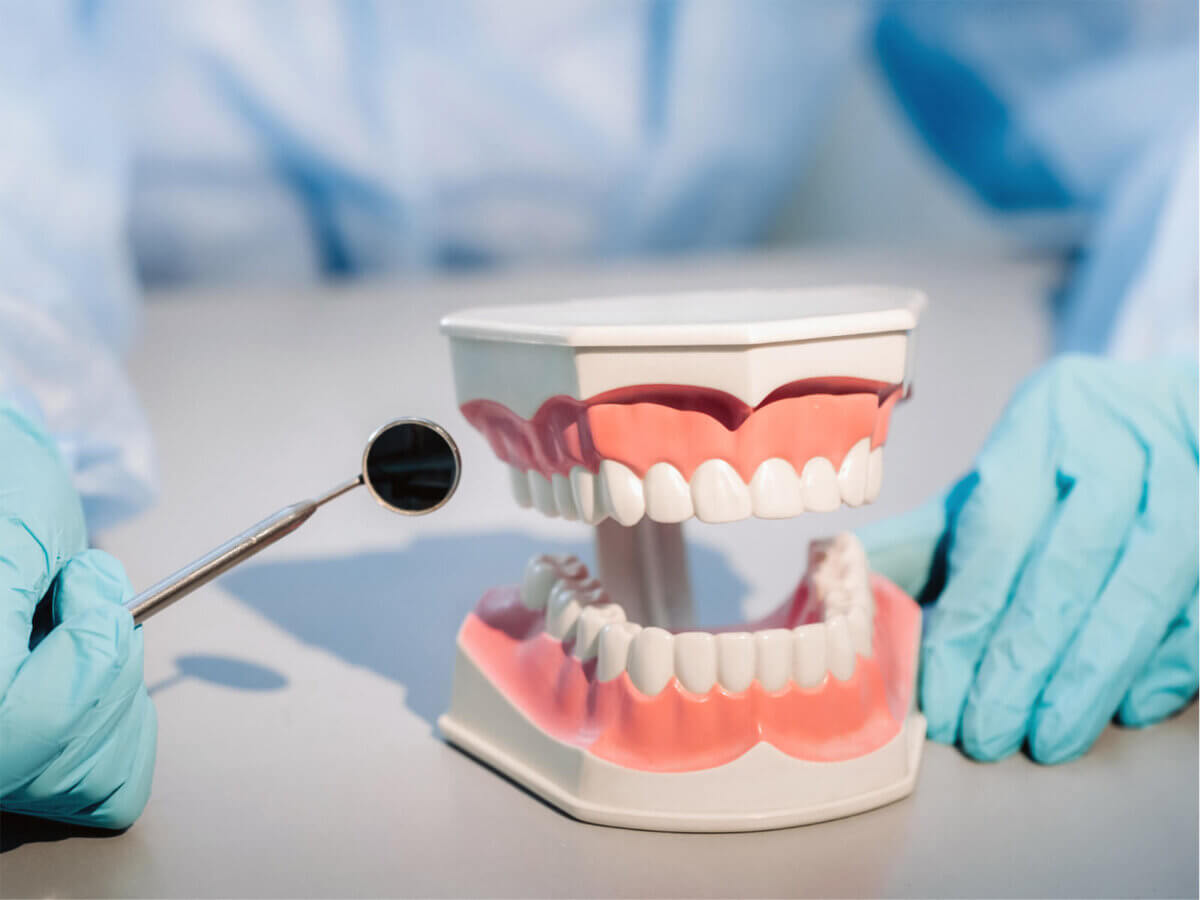Blog
Dental hygiene tips for healthy teeth & gums

Dental Bridge Complications And How To Address Them
Dental bridges are a popular and effective method for replacing lost teeth, restoring oral function, and enhancing the appearance of a smile. However, like any dental treatment, bridges can develop complications over time. Understanding potential issues and knowing how to address them is crucial for individuals with dental bridges. This detailed guide will explore common dental bridge problems and provide solutions.
Dental Bridge Decay:
- Cause:
Dental bridges are susceptible to decay, especially when they connect to natural teeth. Plaque and bacteria can accumulate at the bridge’s edges, leading to decay over time.
- Solution:
- Maintain Good Oral Hygiene: Brushing and flossing around the bridge are vital for preventing decay. Use a floss threader or an interdental brush to clean underneath the bridge and between supporting teeth.
- Regular Dental Check-Ups: These allow the dentist to monitor the bridge’s condition and address any decay signs promptly.
Gum Recession Around the Bridge:
- Cause:
Gum recession around the dental bridge can result from poor oral hygiene, aggressive brushing, or improper design.
- Solution:
- Optimal Oral Care Practices: Use a soft-bristled toothbrush and brush gently to avoid harming the gums.
- Routine Dental Exams: These can detect gum recession early, allowing for timely intervention.
Bridge Fracture or Breakage:
- Cause:
Excessive force from biting, chewing hard foods, or trauma can lead to bridge fracture or breakage.
- Solution:
- Dietary Changes: Avoid hard or sticky foods that can place excessive stress on the bridge.
- Nightguard for Teeth Grinders: This can prevent undue stress on the dental bridge.
- Immediate Dental Attention: Seek prompt dental care for repair or replacement in case of fracture or breakage.
Supporting Tooth Deterioration:
- Cause:
Neglecting oral hygiene can lead to the deterioration of the natural teeth supporting the dental bridge.
- Solution:
- Routine Dental Check-Ups: These are essential for assessing the condition of supporting teeth and addressing deterioration early.
- Optimal Oral Hygiene: Maintain a comprehensive oral hygiene routine, focusing on areas around and under the bridge.
Inadequate Bridge Fit or Misalignment:
- Cause:
Poor bridge design, improper installation, or changes in natural teeth over time can result in poor fit or misalignment.
- Solution:
- Dental Evaluation: If you notice changes in fit or alignment, schedule a dental check-up to assess the cause and necessary adjustments.
- Bridge Replacement: In some cases, a poorly fitted bridge may need replacement for optimal function and aesthetics.
Sensitivity or Discomfort:
- Cause:
Discomfort around the dental bridge can be due to nerve exposure, ill-fitting bridges, or underlying dental conditions.
- Solution:
- Dental Examination: A thorough exam can identify the cause of sensitivity and recommend appropriate treatment.
- Bridge Adjustment: If the bridge is causing discomfort, it can be adjusted to improve fit and reduce sensitivity.
Bridge Pylon Loosening:
- Cause:
The pylon or abutment securing the bridge to natural teeth or implants may loosen over time, compromising the bridge’s stability.
- Solution:
- Dental Treatment: Seek immediate dental care if you notice any signs of pylon loosening.
- Refitting or Replacement: Depending on the severity, the dentist may need to refit or replace the bridge.
Allergic Reactions to Bridge Materials:
- Cause:
In rare cases, individuals may experience allergic reactions to the materials used in dental bridges.
- Solution:
- Consultation with Dentist: If you suspect an allergic reaction, consult your dentist. They can identify the materials used in the bridge and offer alternative solutions if necessary.
Conclusion:
While dental bridges are a reliable and aesthetically pleasing tooth replacement option, complications can arise. Key to effectively managing these issues are proactive oral care, regular dental check-ups, and timely intervention when complications are detected.


